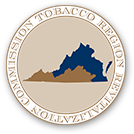In today’s environment – where markets are largely global and employment is increasingly knowledge-based – the Commission seeks to accelerate regional transformation, giving citizens expansive opportunities for education and employment, and providing communities the benefits of economic stability, diversification, and enhanced prosperity. In particular, the Commission seeks to meet the region’s specific challenges related to a historic dependence on tobacco production, textile and furniture manufacturing, and coal production.
As a result, the Commission also recognizes that investments should reflect and directly advance local, regional and state priorities as established by elected and appointed officials, representatives from institutions of higher education, and other community leaders. The Commission views economic development as a partnership, and will – as often as practicable -seek input from regional stakeholders to ensure its priorities align with those of the region.
The Commission’s work is grounded in an objective and quantifiable economic base analysis. In general, directly productive industries, and the workforce training and development which supports them, do more to further this goal and should be favored over an increase in service industries primarily serving local markets.
Finally, the Commission must focus on ensuring the maximum impact of its expenditures, both as they relate to creating economic growth, and as they relate to maintaining the Commission’s fiscal sustainability as a critical source of capital to the region the Commission serves.
Annual Report
Our annual report provides an update on grants that were awarded over the past year as well as an updated look at the Commission’s overall revenues, expenditures and net position.
Strategic Plan
The Commission’s Strategic Plan is our guiding document designed to move the Commission forward in a way that allows us to best serve Southern and Southwest Virginia. It includes information on funding priorities, committee structure, program goals, budget, bylaws and more.
